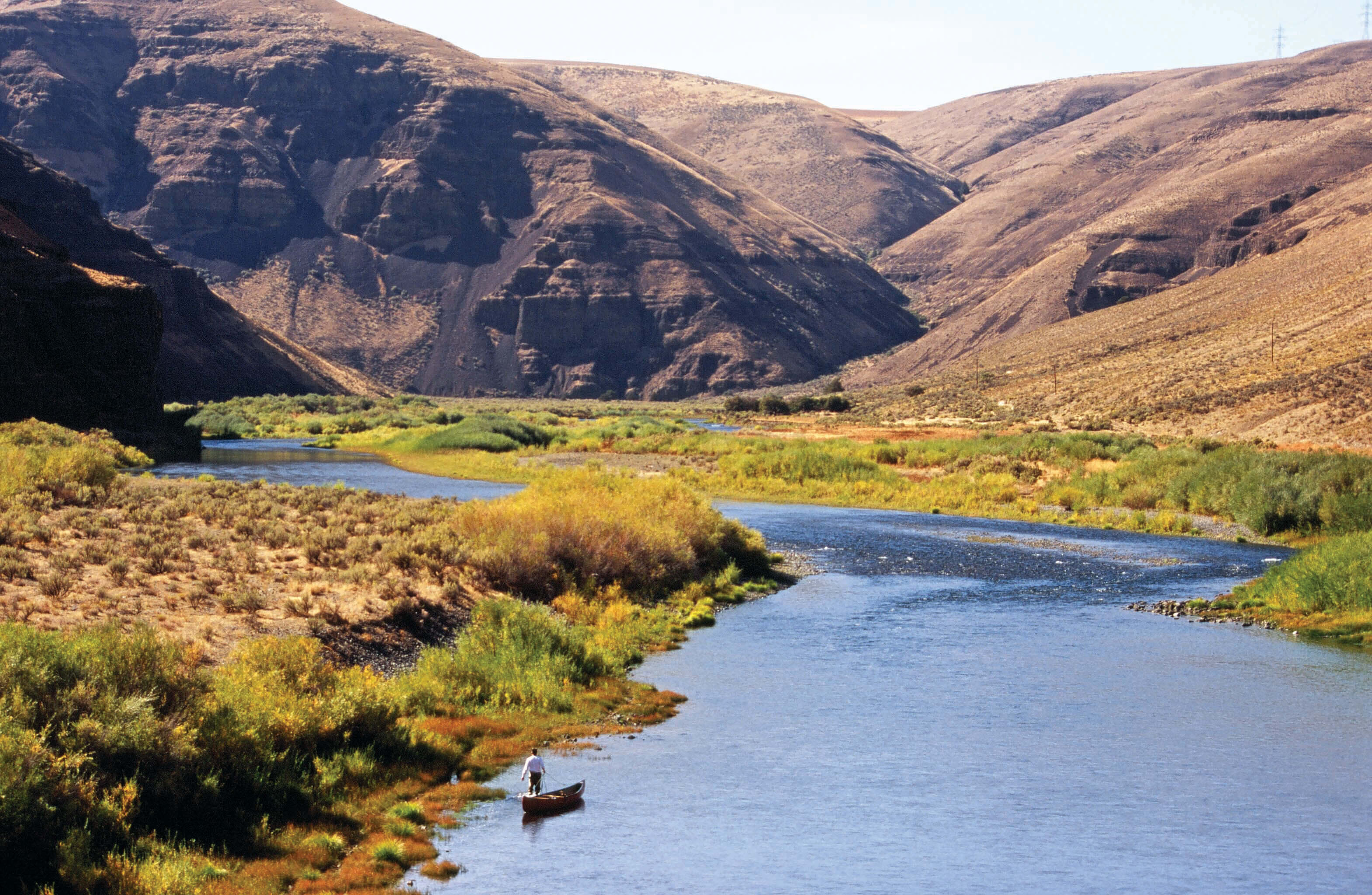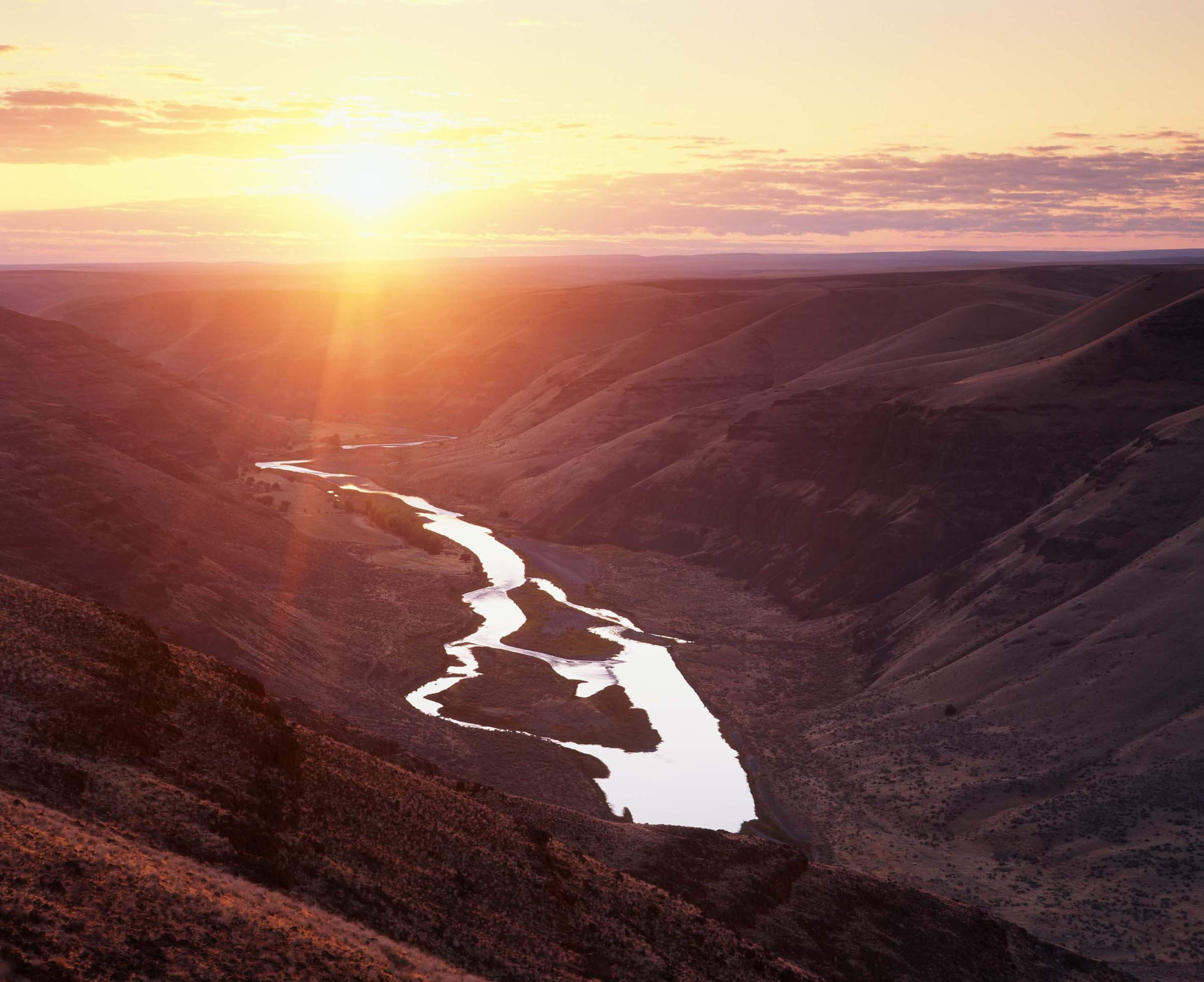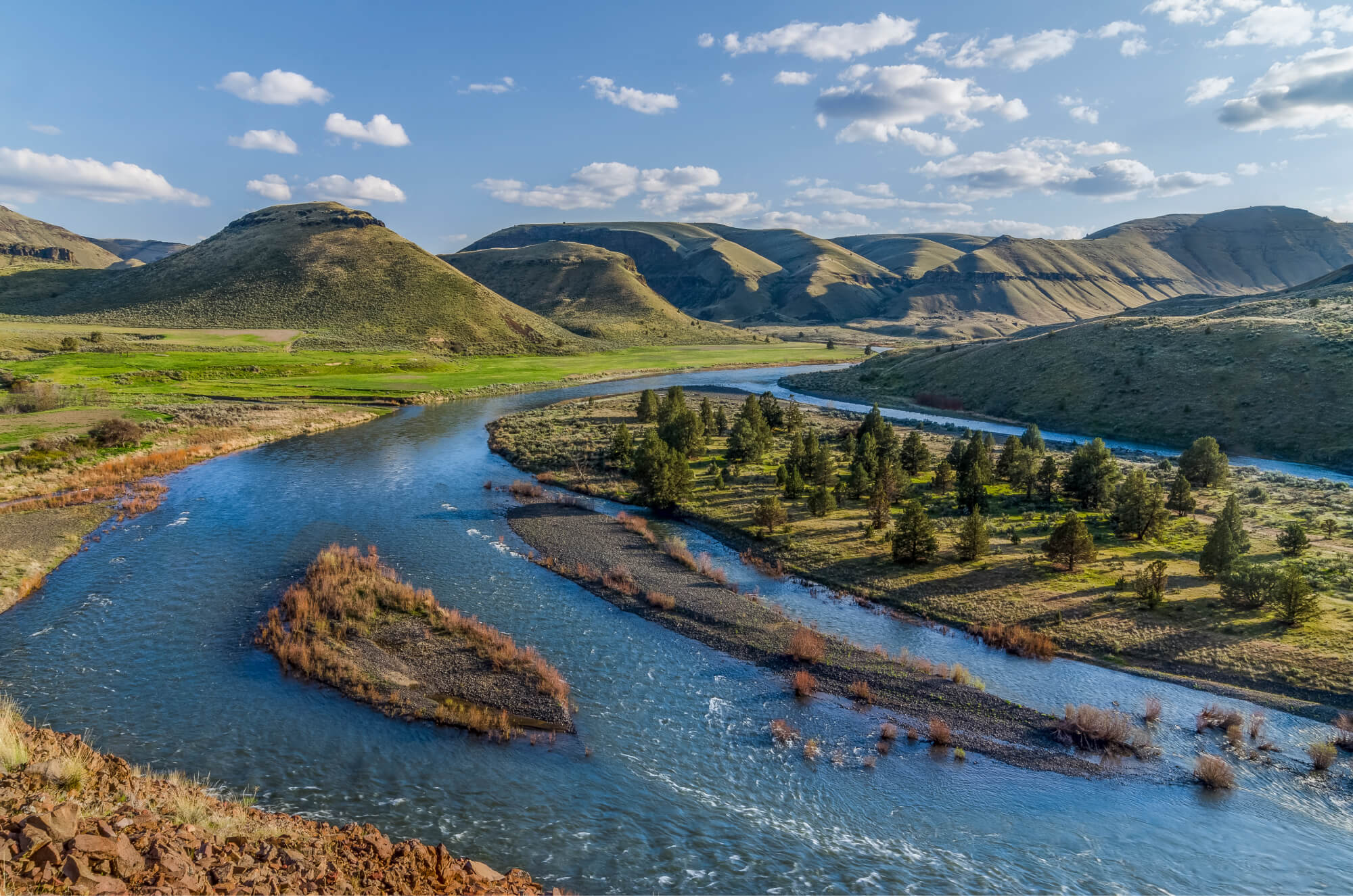The Longest Free-Flowing River West of the Rockies
The John Day River looms large in the minds of conservationists and river enthusiasts. It is the Pacific Northwest’s longest undammed river and one of the longest Wild and Scenic River corridors. It has the healthiest run of wild summer steelhead in the Columbia River basin, where they are listed as a Threatened species. The John Day is a stronghold for fall and spring Chinook, while bull trout, listed throughout their range as Threatened, thrive in the river’s upper reaches. As a large, relatively intact natural river system, free of hatcheries, remote from urbanizing pressures and having high potential for restoration, the John Day is extraordinary not just for Oregon, but for the entire West.
In September 2008, Western Rivers Conservancy purchased 16 miles of property along both banks of the John Day, which included the 8,015-acre Murtha Ranch and its 8,000-acre Bureau of Land Management grazing lease.
The acquisition conserves a vast reach of John Day canyon land and protects extensive and continuous expanses of native shrub-steppe habitat. This low-rainfall, open grassland once spanned large parts of the Columbia Plateau, but has been largely replaced by irrigated agriculture. The area is home to a number of rare native species, including Oregon’s largest herd of bighorn sheep; ground-nesting birds like the grasshopper sparrow and burrowing owl; rare birds of prey like the ferruginous hawk and loggerhead shrike; and reptiles like the sagebrush lizard. The property also boasts one of the few steelhead spawning and rearing habitats on the entire lower river: Hay Creek. This spring-fed tributary runs cool and clear year-round and is a vital component of the river’s healthy steelhead runs.
Over a three-year period, WRC conveyed the land to the Oregon Parks and Recreation Department (OPRD). In anticipation of the park’s opening, WRC, its partners and community volunteer crews conducted streamside restoration work along three miles of lower Hay Creek and along five miles of the main-stem John Day. OPRD also conducted restoration work along the main-stem and created a small picnic area, a welcome station and a primitive campground. In September 2013, the property, renamed Cottonwood Canyon State Park, opened to the public as Oregon’s largest state park in a generation. In 2019, WRC conveyed a 117-acre ranch to OPRD to expand the northern end of the state park. This enhanced park management and allows OPRD to improve access at the remote Starvation Lane boating site.
A New Park for the Fish, Wildlife and People of Oregon
Now that the ranch is protected and open to the public as a state park, we are developing a pilot grazing program in partnership with OPRD, the BLM and a neighboring rancher. The goal of the program is to use grazing as a management tool to enhance native habitat by reducing the amount of noxious weeds (primarily cheat grass) and increasing the quantity and quality of native grasses. We plan to use short-duration, high-intensity grazing to knock back nonnative grasses, which emerge before native grasses; once the native grasses begin sprouting, we will pull the cows off. As part of the program we are fencing cows out of fragile riparian habitat, streams and wetlands, as well as designing it to be compatible with the area’s recreational uses. In the end, we want to demonstrate that grazing can be an effective conservation management tool that ensures the long-term health of the John Day River, its tributaries and the fish and wildlife that depend on both.
Conserving Murtha Ranch as a state park fills a gap in the 148-mile-long John Day Wild and Scenic River corridor and is an important step in a larger conservation vision for the John Day River. The project has been a tremendous opportunity to enhance low-impact recreation. Public access that is compatible with our conservation goals will offer a premier outdoor experience for anglers, boaters, hikers and hunters. WRC continues to pursue strategic properties to protect this important river system, conserve sensitive and diverse habitats and provide public access.
For up to date access information please visit the Cottonwood Canyon State Park website.
Critical support for our work on the John Day River was provided by the Autzen Foundation, Bella Vista Foundation, L.P. Brown Foundation, Burch-Safford Foundation, The Collins Foundation, The Conservation Alliance, Cecil & Sally Anne Drinkward Fund of The Oregon Community Foundation, Doris Duke Charitable Foundation, Fly Fishers Foundation, Gilliam County, Ned and Sis Hayes Fund of The Oregon Community Foundation, Jubitz Family Foundation, Lynn and Jack Loacker, Charlotte Martin Foundation, Mead Foundation, Meyer Memorial Trust, M. J. Murdock Charitable Trust, My Own Labels, Inc., National Fish and Wildlife Foundation, The Oregon Community Foundation, Oregon Department of Fish and Wildlife, Oregon Parks and Recreation Department, Oregon Parks Foundation Fund of The Oregon Community Foundation, Oregon State Weed Board, Oregon Watershed Enhancement Board, Portland General Electric, Carol and Velma Saling Foundation, Smith-Welsh Foundation, Weeden Foundation, Westfly, Inc., Wildlife Conservation Society and an anonymous foundation.













